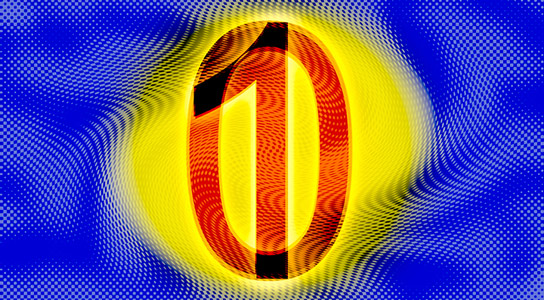
Yale Physicists discover a new form of quantum friction. Credit: Michael S. Helfenbein
Physicists at Yale University have observed a new form of quantum friction that could open new avenues in the fields of nonlinear quantum optics and quantum information, where systems with multi-dimensional steady state manifolds can be used as error corrected logical qubits.
The researchers have experimentally confined the state of a harmonic oscillator to the quantum manifold spanned by two coherent states of opposite phases. In particular, they have observed a Schrodinger cat state spontaneously squeeze out of vacuum, before decaying into a classical mixture. This was accomplished by designing a superconducting microwave resonator whose coupling to a cold bath is dominated by photon pair exchange. The researchers are building upon decades of research, experimentally demonstrating a procedure theorized nearly 30 years ago.
The results appear in the journal Science and are based on work in the lab of Michel Devoret, the F.W. Beinecke Professor of Applied Physics.
Quantum computers, a technology still in development, would rely on the laws of quantum mechanics to solve certain problems exponentially faster than classical computers. They would store information in quantum systems, such as the spin of an electron or the energy levels of an artificial atom. Called “qubits,” these storage units are the quantum equivalent of classical “bits.” But while bits can be in states like 0 or 1, qubits can simultaneously be in the 0 and 1 state. This property is called quantum superposition; it is a powerful resource, but also very fragile. Ensuring the integrity of quantum information is a major challenge of the field.
Zaki Leghtas, first author on the paper and a postdoctoral researcher at Yale, offered the following metaphor to explain this new form of quantum friction:
Imagine a hill surrounded by two basins. If you put a ball at the top of the hill, it will roll down the sides and settle in one of the basins. As it rolls, it loses energy due to the friction between the ball and the ground, and it slows down. This is why it stops at the bottom of the basin. But friction also causes the ball to leave a path in its wake. By looking at either side of the hill and seeing where grass is flattened and stones are pushed aside, you can tell whether the ball rolled into the right or left basin.

This figure depicts the position of a quantum particle over a time of 19 microseconds. Dark colors indicate a high probability of the particle existing at the specified position. It is a plot of the time-evolution of the Winger function W (⍺) of the quantum system, with black corresponding to 1.0, white to 0, and blue to –0.05. Credit: Michael S. Helfenbein
If you replace the ball with a quantum particle, however, you run into a problem. Quantum particles can exist in many states at the same time, so in theory, the particle could occupy both basins simultaneously. But as the particle is rolling down, the friction between the particle and the hill leaves an impact on the environment, which can be measured. The same friction that stops the particle at the bottom also carves the path. This destroys the superposition and forces the particle to exist in only one basin.
Previously, researchers had been able to take advantage of this friction to trap quantum particles in particular basins. But now, Devoret’s lab demonstrates a new type of friction — one that slows the particle as it rolls, but does not carve a path that tells which side it is choosing. This allows the particle to simultaneously exist in both the left and right basins at the same time.
Each of these “basin” states is both stable and steady. While the quantum particle might move around in the basins, small perturbations won’t kick it out of the basins. Furthermore, any superpositions of these two basin states are also stable and steady. This means they could be used as a basis for storing quantum information.
Technically, this is called a two-dimensional quantum steady-state manifold. Devoret and Leghtas point out that the next step is expanding this two-dimensional manifold to four dimensions — adding two more basins to the landscape. This will allow scientists to redundantly encode quantum information and to do error correction within the manifold. Error correction is one of the key components that must be developed in order to make a practical quantum computer feasible.
Additional authors are Steven Touzard, Ioan Pop, Angela Kou, Brian Vlastakis, Andrei Petrenko, Katrina Sliwa, Anirudh Narla, Shyam Shankar, Michael Hatridge, Matthew Reagor, Luigi Frunzio, Robert Schoelkopf, and Mazyar Mirrahimi of Yale. Mirrahimi also has an appointment at the Institut National de Recherche en Informatique et en Automatique Paris-Rocquencourt.
Reference: “Confining the state of light to a quantum manifold by engineered two-photon loss” by Zaki Leghtas, Steven Touzard, Ioan M. Pop, Angela Kou, Brian Vlastakis, Andrei Petrenko, Katrina M. Sliwa, Anirudh Narla, Shyam Shankar, Michael J. Hatridge, Matthew Reagor, Luigi Frunzio, Robert J. Schoelkopf, Mazyar Mirrahimi and Michel H. Devoret, 20 February 2015, Science.
DOI: 10.1126/science.aaa2085
arXiv: 1412.4633

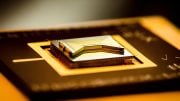

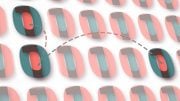

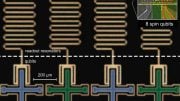
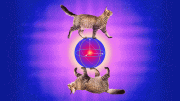

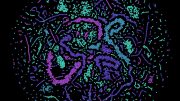
Be the first to comment on "New Form of Quantum Friction Observed"